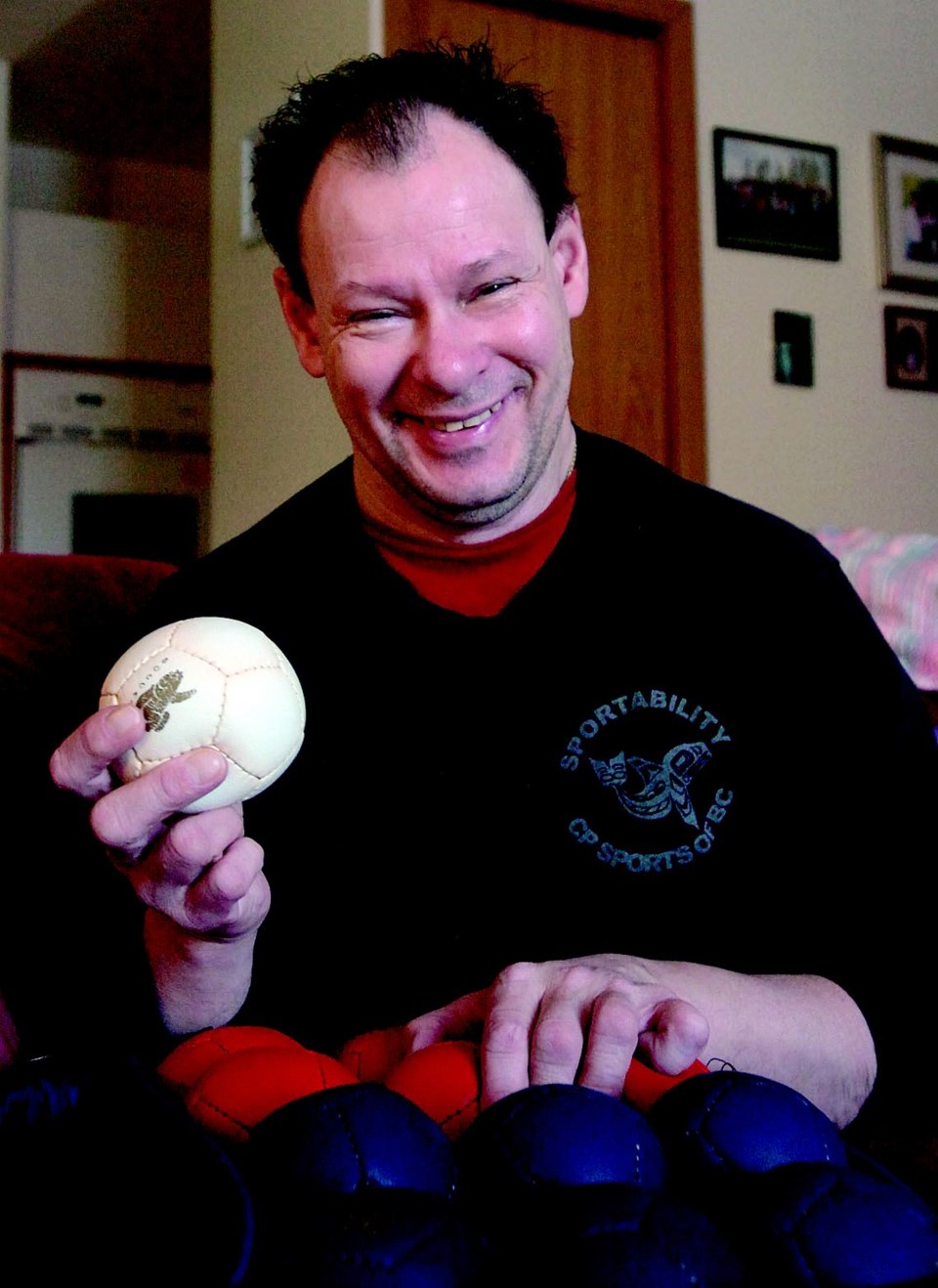He's a two-time Paralympian, and Paul Jalbert has every intention of competing on the world's biggest stage again.
Jalbert, a 49-year-old Prince George resident who was born with cerebral palsy, represented Canada in cycling at the 1992 Paralympics in Barcelona and was also in the saddle for the 2002 Games in Athens. A couple years ago, feeling he had accomplished as much as he could on a bike, he switched to a new and completely different sport -- boccia.
Jalbert quickly established himself as one of the best throwers in B.C. and found himself attending national-level tournaments. These days, he's preparing for the Canadian championships, March 21-25 in Montreal, and a strong showing there would help put him on a path to the 2016 Paralympic Games in Rio.
"I would like to go [to Rio] and try and help the team and also myself win a medal, which is going to take a lot of work," said Jalbert, who fell short of the medal podium in his previous Paralympic appearances.
"It would mean a lot to get there," he added. "When I see an opportunity to go after something, it makes me work much harder."
The sport of boccia features singles and team competition. A singles game consists of four ends, with each player throwing six leather-covered balls per end. The game starts with one player throwing a white ball known as a jack. With the next shot, that same player tries to place one of his coloured balls as close to the jack as possible. The opposing player then shoots until one of his balls comes to rest closest to the jack. Then it's the other person's turn to try to get closer or knock the opponent's ball out of the way. When all balls have been thrown, the referee awards a point for every ball from one player that is closer to the jack than the opponent's closest ball.
The rules for team competition are the same, but matches last six ends. Teams normally have five players.
Boccia players are classed based on their levels of functional ability. On a scale of BC1 to BC4, which represents high-functioning to low functioning, Jalbert is a BC2.
At the upcoming national championships, two versions of Team Canada will be selected -- an 'A' team and a 'B' team. This year, they will travel to selected international tournaments, including one in Portugal.
"My goal is to try and at least make one of those teams, just to get on that level," Jalbert said.
Health problems have kept Jalbert off the competitive boccia scene since last April, when he threw in a national-calibre DefiSport tournament in Montreal. In singles play, he finished fifth and, in the team event, he helped B.C. to a bronze medal.
Fortunately, Jalbert won't head into nationals cold, because he'll be in Victoria this weekend for a tournament called Screamers. At the gathering, he'll go up against some BC1 players, which should be a perfect tune-up for Montreal.
Boccia is as much mental as it is physical and Jalbert's ability to think his way through matches typically gives him an advantage in both singles and team play.
"[Coaches] see me as more advanced than a lot because if I'm looking at a shot I'll ask my teammates what they see, what's possible," he said. "Then I'll suggest some things to them because there are certain ways to get the ball in there. It's just that you have to have confidence in doing it. Some of them, they've been playing for 10 years and you would think they would have all the confidence to make certain shots and some of them don't."
Jalbert receives little in the way of funding so he's seeking sponsorship for the 2013 season. Anyone who is interested in helping is asked to contact him via e-mail at [email protected]. Tax receipts are available.



